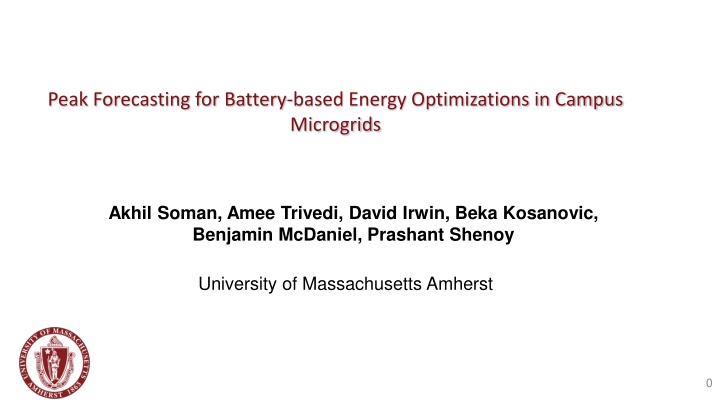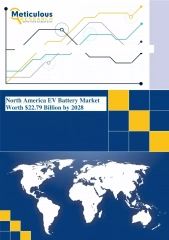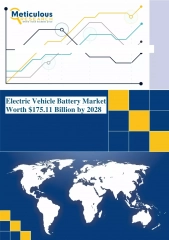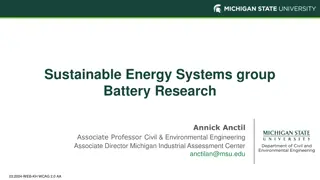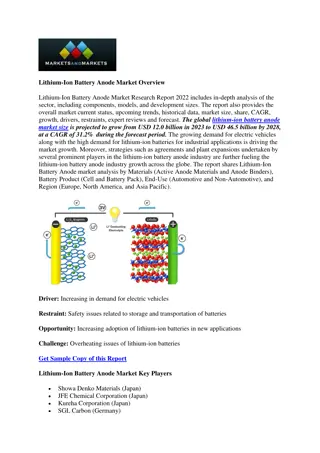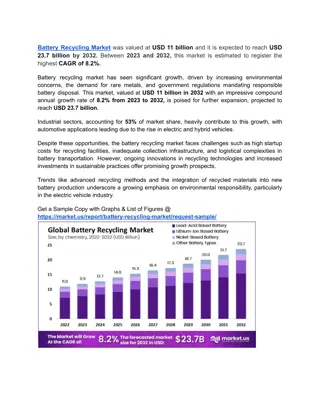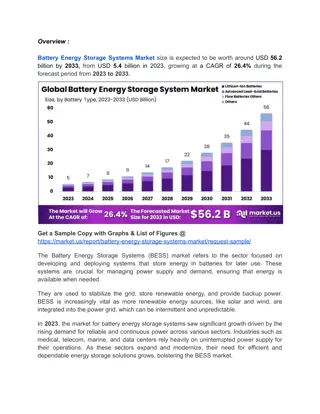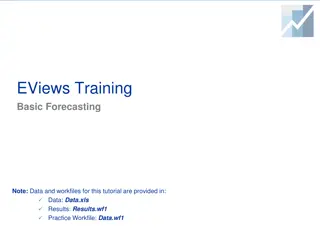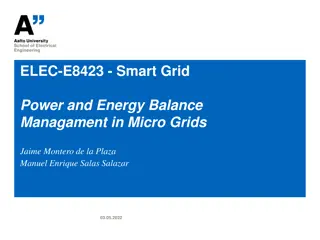Peak Forecasting for Battery Optimization in Campus Microgrids
Smart microgrids with energy optimizations such as peak shaving and load flattening are becoming essential for efficient energy management. This study presents a machine learning-based approach, specifically LSTM models, for peak load forecasting in campus microgrids. The implementation includes a case study on a UMass campus microgrid with battery storage, showcasing significant cost savings through optimized battery usage based on peak predictions.
Download Presentation

Please find below an Image/Link to download the presentation.
The content on the website is provided AS IS for your information and personal use only. It may not be sold, licensed, or shared on other websites without obtaining consent from the author.If you encounter any issues during the download, it is possible that the publisher has removed the file from their server.
You are allowed to download the files provided on this website for personal or commercial use, subject to the condition that they are used lawfully. All files are the property of their respective owners.
The content on the website is provided AS IS for your information and personal use only. It may not be sold, licensed, or shared on other websites without obtaining consent from the author.
E N D
Presentation Transcript
Peak Forecasting for Battery-based Energy Optimizations in Campus Microgrids Akhil Soman, Amee Trivedi, David Irwin, Beka Kosanovic, Benjamin McDaniel, Prashant Shenoy University of Massachusetts Amherst 0
Motivation Smart Grids are becoming commonplace in today s world Smart microgrids: local grid with control capability and autonomous operation Energy optimizations: Peak shaving, demand charge reduction, load flattening Common characteristic: knowledge of when peak occurs Peak forecasting problem: Predict the future peak load Figure courtesy: N. Naji 1
Load Forecasting vs Peak Forecasting Load Forecasting : Predict future demand over forecasting horizon Well studied problem [Son et. al] [Ghasemi et al] Load forecasting can identify peaks, but less effective. Peak Forecasting : Identify when future peak occurs and its magnitude Less studied [Jiang et. al.] 2
Talk Outline Motivation Peak Forecasting using Machine Learning Evaluation and Case study Results 3
LSTM-based Peak Prediction Objective : Predict top k and bottom k hours LSTM based machine learning approach Features: historic demand, season, semester, time of the day, local weather Peak Predictor: 4-layer LSTM 4
Model Accuracy Dataset : Campus microgrid of 156 buildings with 2 year trace. Top k hour peak prediction accuracy Example Peak Forecast 5
Battery Case Study UMass Campus Microgrid: Onsite powerplant, Solar arrays and 4 MWhr Battery + local electric grid. Cost of electric demand - $22/kW LSTM model used to predict top-k and bottom-k hours, k<5 Battery charged during bottom-k hours and discharged during top-k hours Annual savings of $496,320! 6
Implementation Prototype implementation in python Code release : https://github.com/umassos/peak-prediction Low footprint and efficient 4-layer model : 300 kB RAM 2-layer model : 150 kB RAM 1.8 second CPU time for day ahead forecast on Raspberry pi. 7
Conclusions Peak forecasting is related to but distinct from load forecasting LSTM-based machine learning approach Outperforms state-of-the-art forecasting methods Useful for battery-based grid optimization 8
Thank you Questions?
